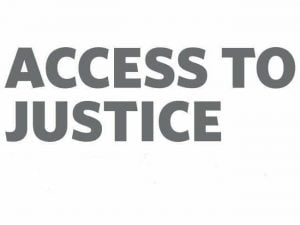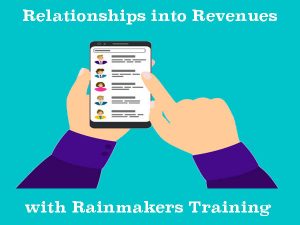When Is It Time to Stop Selling?
Subject-matter experts (SMEs) and business development pros often wonder when to stop selling to a particular prospect. I won’t hide the ball. I’ll give you a direct answer. Your goal is revenue. So, stop selling when it is clear you will not earn any revenue from the prospect.
An informed “no” or the hiring of a competitor provides the requisite clarity. But often, pointless selling activity continues because the prospect won’t say “no” and the seller doesn’t know either how to advance the pursuit to the next stage of the buyer’s purchasing cycle or, in the alternative, when to give up.
In this article, buyers will learn how to say “no” without missing out on useful information, and sellers will learn two lessons: how to avoid limbo and when to let go.
How to Say “No” to a Salesperson
Procurers who do not wish to be bothered by poor salespeople need to learn how to say “no” effectively. Dodging a salesperson is not saying “no” nor is hemming and hawing. In fact, these behaviors cause many sellers to pursue harder.
Thus, if a buyer is sure that an offering will not help them achieve their business objectives, they should say as much. A so-called “hard no” such as “I have no demand for an offering such as yours” (e.g., a customer service call center) is something that should cause a sensible salesperson to cease and desist.
On the other hand, if a buyer is unsure of whether an offering will help them succeed, it makes sense to take 10 minutes to learn about the offering. If the offering proves valuable, you’ll be pleased that you have it while your competitors may not.
If your disinterest is due to a budget issue, say “I don’t have any money.” Of course, as a response, not having any money equates to “not now” rather than “no.” If you want a reprieve from the seller’s pursuit, you’ll need to inform the seller of when the matter should be revisited. Try saying something like “Shavon, I don’t have the budget right now, but I get my annual allocation in January. Why don’t you reach out to me in the fall.”
If “Shavon” is smart, she will not bring up the possibility of an engagement again until October but will nurture the relationship with monthly touches until then. This will give you an opportunity to learn whether Shavon is someone with whom you might want to do business.
How to Say “No” to GenAI
What if you’re getting personalized form emails likely sent by AI? I don’t recommend responding to computer generated emails. Responding lets them know the email address is being monitored. It’s a signal for the robot to classify you as a lead. This is so even if your response was “I’m not interested.” Next, your email address is likely to be referred a human for follow-up.
However, it is still very early in the selling cycle. Invariably, the human sales rep won’t be any more knowledgeable about you, your company, or its needs than the machine was. Instead, the follow-up call is likely to be a fishing expedition, unworthy of your time or attention (e.g., “Do you need a call center? No? How about some data processing? We also develop mobile apps, need that?).
Therefore, the best practice is to delete GenAI emails unread. You likely will continue to receive them for a time. However, eventually (i.e., in six months or so) the mail service should notice that the open rate is zero and remove you from the list.
How to Handle a Savvy Buyer
Sometimes a prospect’s failure to say “no” is strategic. They engage with the seller and continue to ask questions but never advance the pursuit to the next stage of their purchasing cycle. The purpose of this behavior is to get the SME’s work for free.
If you don’t want to keep working for free, set some parameters around the giving of advice. Perhaps offer a free 15-minute brainstorming session to demonstrate your style and ability. After that, insist on knowing the prospect’s specific business concerns, budget, and timeframe. Treat a refusal to agree to such a formal discussion as an informed “no,” and stop selling. It’s time. If that prospect has the slightest interest in buying from you, they will call you back and start operating in good faith with you.
Use of the strategic ambiguity tactic is fair game, but so is standing one’s ground and insisting on forward movement in the procurement process.
When Should a Seller Take the Hint?
What’s more common than being strung along by a savvy buyer is the prospect who doesn’t engage at all. They dodge your calls, don’t reply to your emails, cross the street when you’re coming toward them. Should you take the hint and stop contacting them? I don’t think so because evasiveness isn’t an informed “no.”
Prospects often have problems that they haven’t fully explored and therefore do not understand the depth of, or they overlook opportunities because they don’t know that your novel product or approach exists. Try disclosing why you believe they are a qualified prospect. Then, they will often hear you out.
Another possibility is the prospect dislikes confrontation and/or is nervous about engaging with a salesperson. Try to make the interaction less stressful. Remind them that they are in control. Give them permission to say no by saying something like, “Why don’t we have a 15-minute consultation to see what I have to offer. After that, if you say it isn’t for you, I promise to leave it at that.” If they hear you out and then say no, that is an informed no. You would be foolish (not to mention dishonest) to continue your pursuit at that point.
How to Handle the Indecisive Prospect
An equally common frustration for sellers is the prospect who hems and haws and takes too long to decide what to do. However, buyer paralysis isn’t a “no.” In fact, it’s no answer at all, it’s limbo. Limbo says as much about the seller as it does about the buyer. Usually, it means the seller has not uncovered the problem and/or hasn’t convinced the buyer of the seller’s ability to solve it.
Another conversation is necessary to bring this pursuit to either a “yes” or an informed “no.” However, getting a prospect to hear you out a second time is quite difficult. Try being honest. Explain why you blew it the first time. Were you nervous? Had you misdiagnosed the problem and now have a better understanding? Then, say why you believe having another conversation with you is of value to the prospect. (Note: I would not utilize this approach following a failed pitch where I’d promised not to persist. In that instance, you must keep your word unless the prospect reopens the discussion.)
It’s Time to Give Up
Continually contacting someone who isn’t engaging with you without either adjusting your approach or bringing something new to the conversation leads to nothing except dejection. If a prospect hears you out (or otherwise indicates a familiarity with your offering) and then says “no,” believe them and move on. After all, there should be more prospects in your pipeline. Remember, revenue is your goal. Time is your most precious resource. Spend it where you are likely to earn revenue.
Get more business development advice on our articles page.







Comments are closed